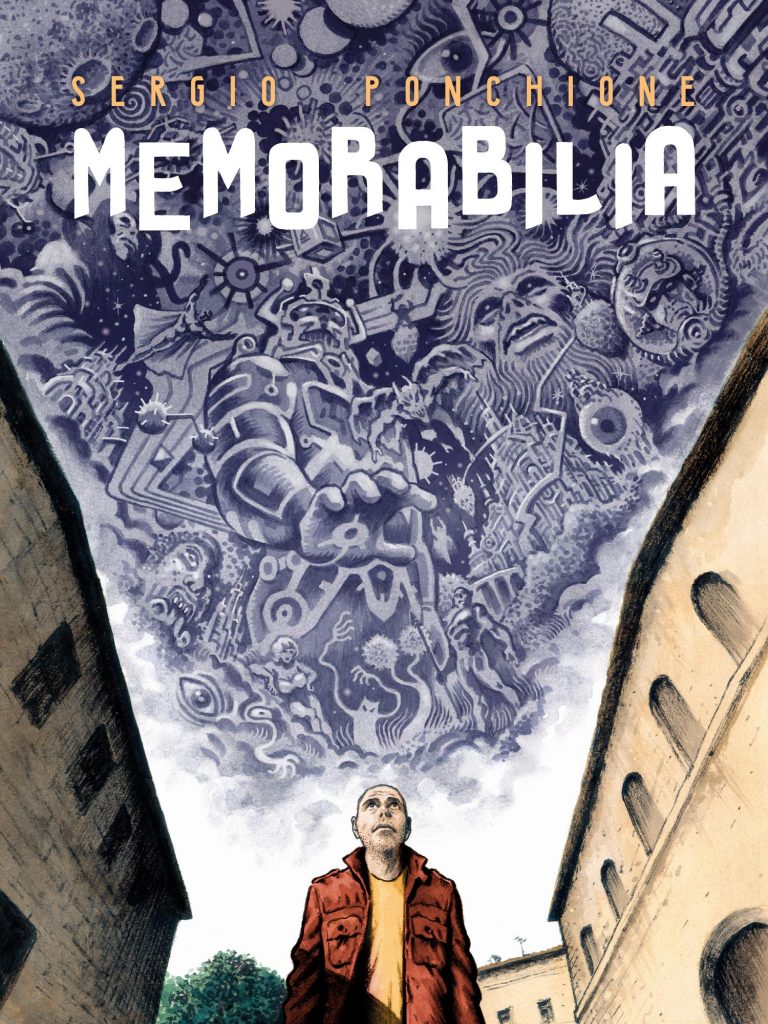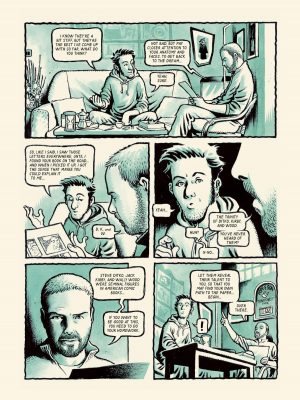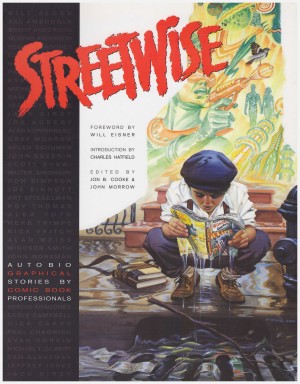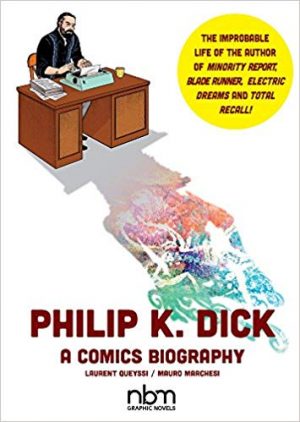Review by Ian Keogh
Memorabilia is a selection of brief loving tributes from creator Sergio Ponchione to the great American comic artists who’ve influenced him. He’s hardly exclusive in citing the talents of Richard Corben, Steve Ditko, Will Eisner, Jack Kirby and Wally Wood, but the originality emerges in the treatment, with Ponchione’s imagination equal to the creators he reveres. It’s an intense and personal work revealing as much about Ponchione as his subjects, as he considers what it is about them that resonates.
His form isn’t straight biography, as each subject is treated differently. Steve Ditko, still alive when the pages on him were completed, is imagined as the barely seen and anonymous old man sticking to rigid principles and work ethics, while the text and illustration commentary on Wally Wood considers his techniques in addition to his work ethic and tragic life. Dreams, fantasies and homages are scattered through the other chapters, Ponchione finding a way into each of his subjects, in Eisner’s case the narrative sparked by a set of flat entry buzzers. That Ponchione is an immensely talented artist himself would be apparent even without the connecting pages where he deliberates on art related matters. He’s able to approximate the style of each artist from technique to layout, but without delivering exact imitations, yet when that is the effect he’s aiming for, he recreates line perfect Corben or Wood illustrations. There’s a detailed precision to the non-homage pages, but also a looseness, and were it not for the revelations, looking at those the impression might be that underground cartoonists Robert Crumb and Kim Deitch were Ponchione’s biggest influences.
As Ponchione notes, Corben has become as reclusive as Ditko, but anyone steeped in comics has certainly comes across reams of material about the remaining four creators, so any appreciation requires considerable originality to stand out and offer something new. The Kirby piece is an entertaining whimsical fantasy, but otherwise Ponchione achieves new insight into some aspect of his subject, be it life or work. A full page illustration in Eisner’s cinematic style depicts the hallways over four floors of the building housing the late 1930s Eisner and Iger studio, for instance. The conditions within have been described by Eisner himself and those who worked for him, but an imagination of the chaos in the hallways of a tenement block is neat, and works doubly well for taking something from Kirby’s childhood recollections.
Ponchione notes his own tendency to bury himself in work until a job is complete, and to obsess about it. It’s apparent from his linking pages where the contemplative angst is overthinking, but as noted in his comments about Wood, the art requires the person as they are, flaws and all. The personal intrusions could be considered an indulgence, but they complete Ponchione, and by extension his subjects, in a memorable memoir.





